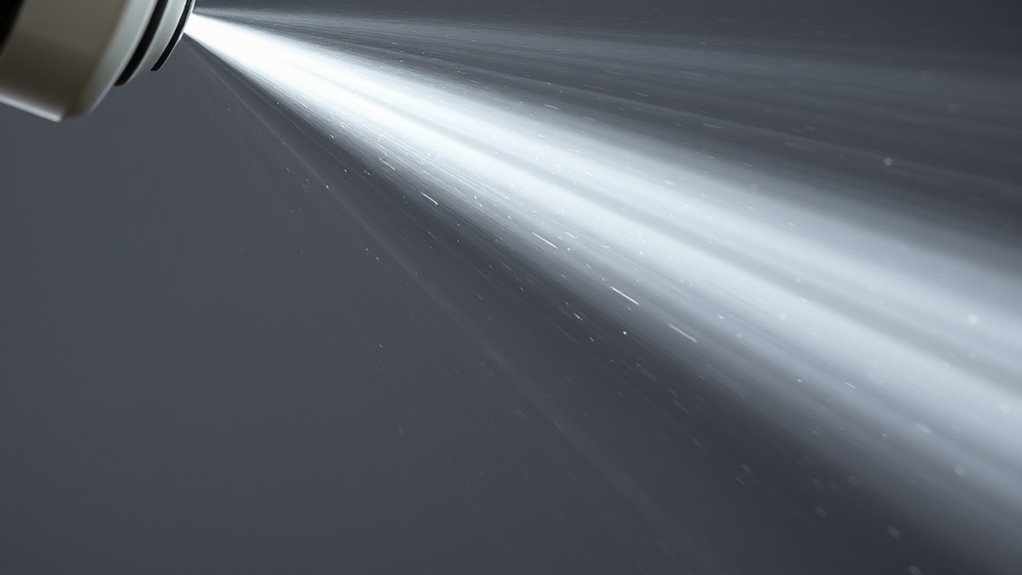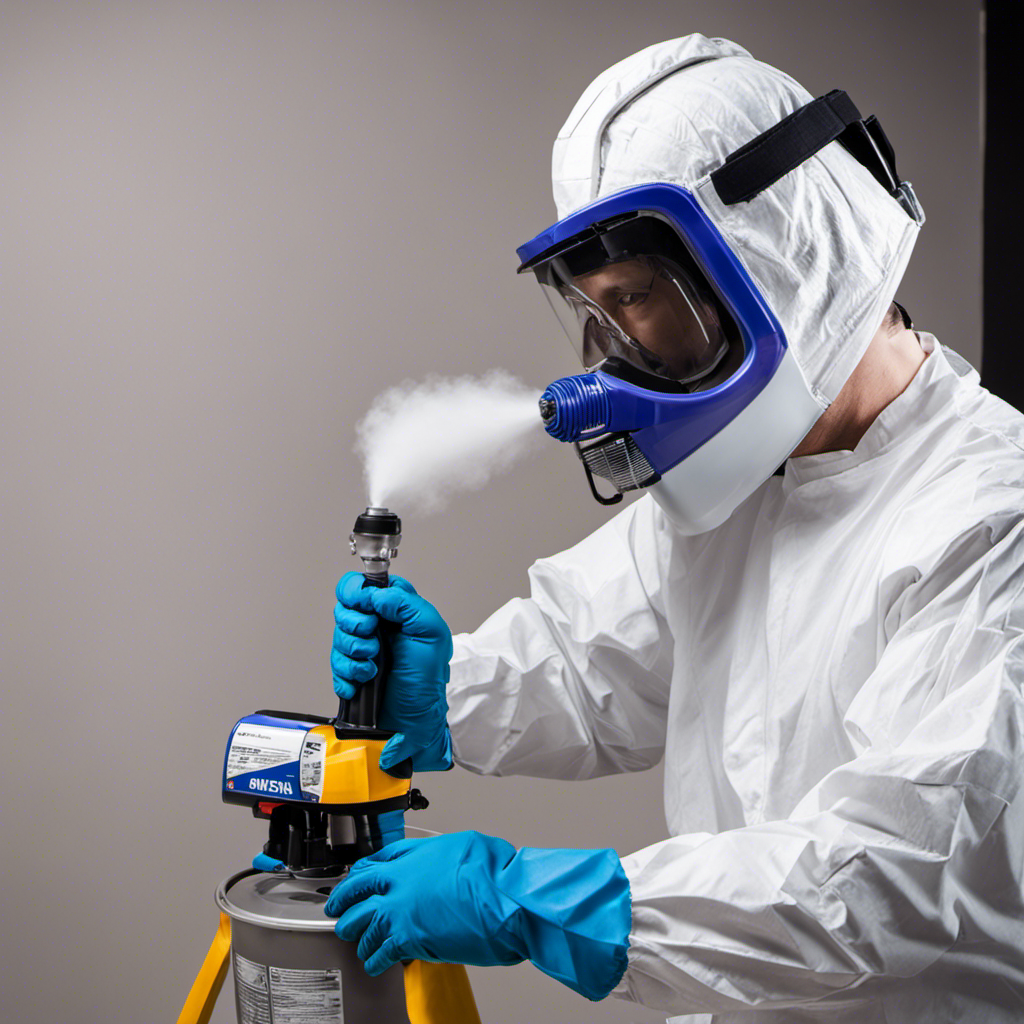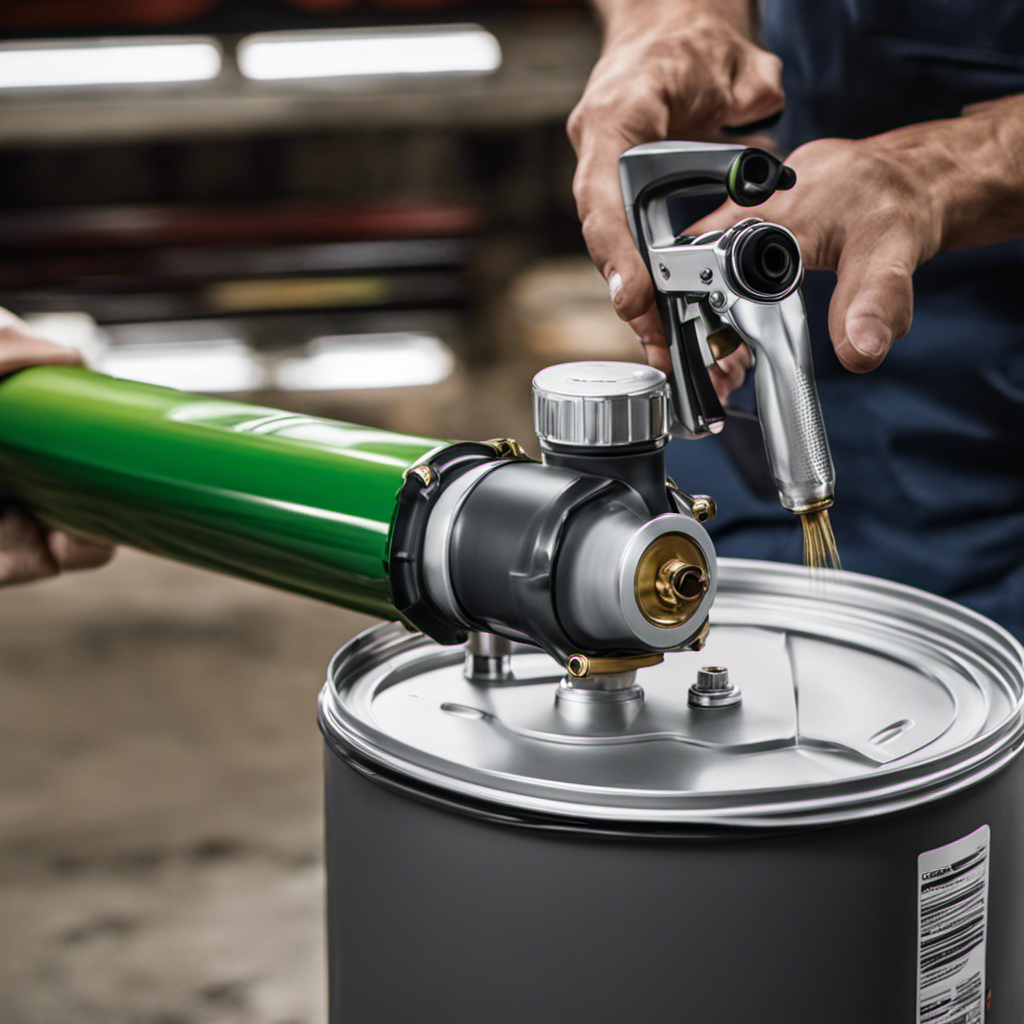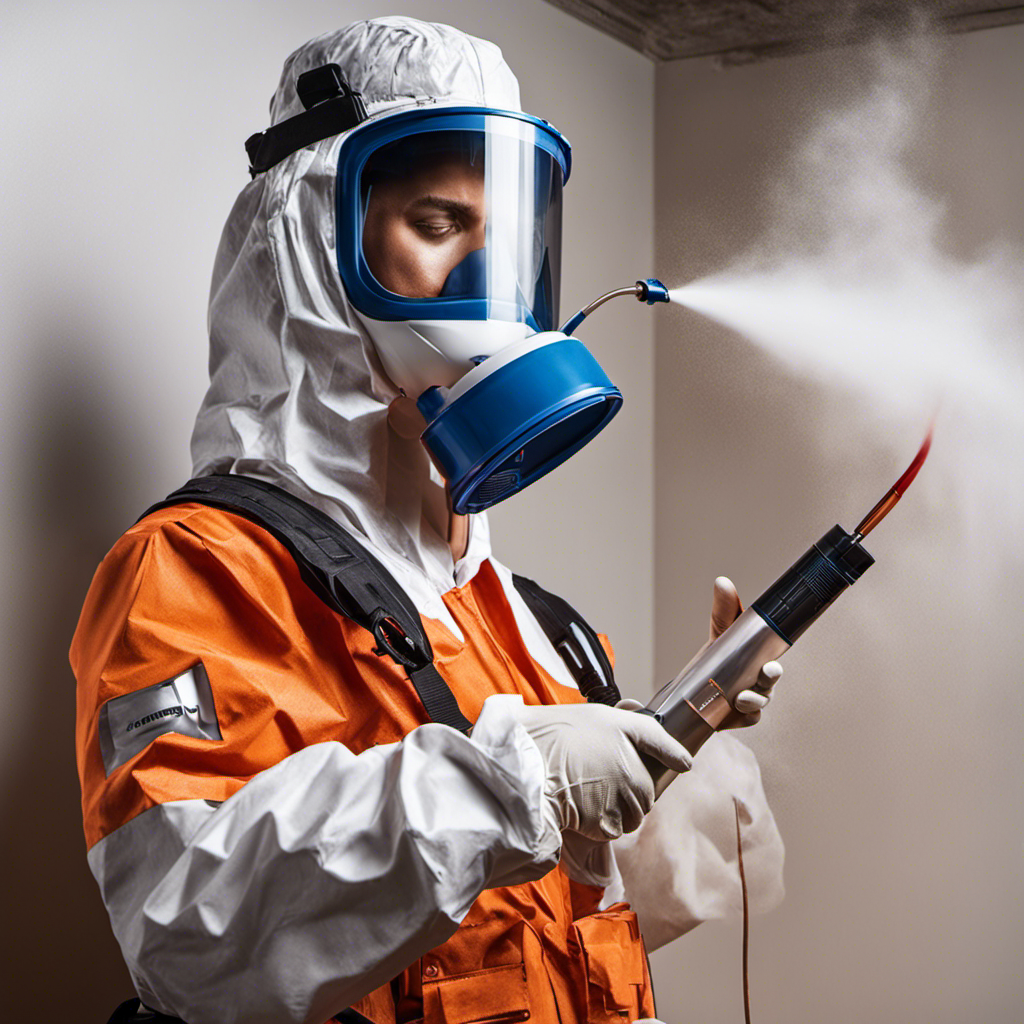To fix spray pattern tails or lines, start by checking and cleaning your equipment regularly to prevent clogs and irregular spray patterns. Maintain a steady hand and consistent speed, overlapping each pass by about 50% to make sure even coverage. Adjust the spray pressure and environmental conditions like humidity and temperature to promote smooth application. Practice your technique on scrap material to refine your control. For more tips, learn how proper prep and technique help achieve a flawless finish.
Key Takeaways
- Check and clean the spray nozzle regularly to prevent clogs that cause tails and uneven edges.
- Maintain a consistent distance (6–12 inches) and smooth movement to ensure even spray pattern and edges.
- Overlap each pass by about 50% to prevent gaps and create a uniform finish.
- Adjust spray pressure and technique based on environmental conditions to minimize tails and streaks.
- Practice on scrap surfaces to refine your technique and achieve cleaner, smoother edges.
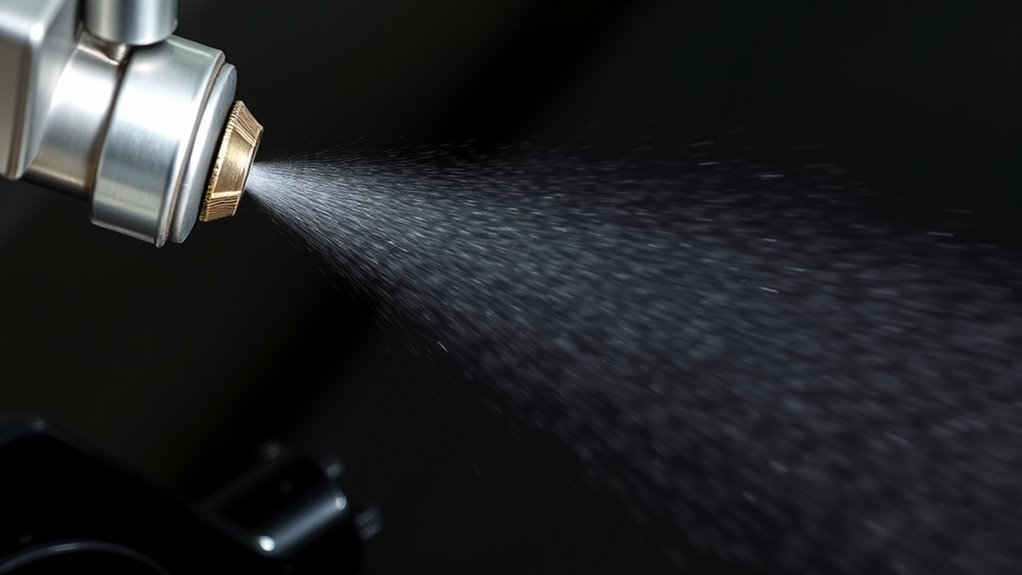
When you spray paint or apply coatings, you might notice that the spray pattern sometimes leaves behind “tails” or lines instead of a clean, even finish. These unwanted streaks can ruin an otherwise smooth surface, making you wonder what went wrong. The key to fixing this issue lies in understanding spray pattern consistency and knowing how to troubleshoot spray tails effectively. Achieving a uniform spray pattern takes practice, but with the right approach, you can minimize these imperfections and get a professional-looking finish.
Spray tails ruin smooth finishes; understand spray pattern basics and troubleshoot to achieve professional results.
The first step is to check your spray equipment. Make sure your nozzle isn’t clogged or damaged, as this can cause inconsistent spray patterns. If the nozzle is dirty, clean it thoroughly according to the manufacturer’s instructions. Next, examine your spray pressure. Too much pressure can cause overspray and uneven edges, while too little might result in a weak, patchy application. Adjust your pressure settings to match the specifications for your paint or coating. Consistent pressure is essential for maintaining an even spray pattern and avoiding the formation of tails or lines.
Another vital factor is your spray technique. Hold the spray gun at a consistent distance from the surface—usually about 6 to 12 inches—and move it smoothly and evenly across the area. Rapid or uneven movements tend to create streaks or tails, so take your time and maintain a steady pace. Overlapping each pass by about 50% can help ensure even coverage without excessive buildup that might cause runs or tails. Also, avoid starting or stopping directly on your workpiece; instead, begin spraying just before the surface and release the trigger after passing beyond the edge. This prevents excess paint from accumulating at the edges, reducing the likelihood of tails forming.
Environmental conditions such as temperature and humidity also influence spray pattern consistency. High humidity can cause paint to dry unevenly, leading to lines or tails, while extreme cold can affect the flow of the paint. Try to spray in ideal environmental conditions and allow your paint to reach the recommended application temperature. If you notice persistent tails, consider thinning your paint slightly, as thicker coatings tend to drip or streak more easily. Just be sure not to over-thin, which can lead to runs or sagging.
Troubleshooting spray tails is a process of elimination. Check your equipment, adjust your technique, and control environmental factors. Practice on scrap material first to fine-tune your approach. Additionally, ensuring your spray pattern remains consistent can be aided by regular maintenance of your spray tools, preventing issues caused by worn or faulty parts. With patience and attention to detail, you’ll improve your spray pattern consistency and eliminate those distracting tails, resulting in a smooth, professional finish every time.
Frequently Asked Questions
Can Spray Pattern Tails Be Completely Eliminated?
You can’t completely eliminate spray pattern tails, but you can minimize them for a smoother finish. Adjust your paint viscosity to guarantee proper atomization, and regularly maintain your spray gun by cleaning nozzles and filters. These steps help improve spray consistency and reduce tails. Practice controlling your spray distance and speed, which also play a role. With proper technique and maintenance, you’ll achieve a cleaner, more professional-looking coat.
How Does Humidity Affect Spray Line Formation?
Imagine humidity as that overenthusiastic friend who just can’t sit still—your spray line formation suffers when humidity impact is high. Excess moisture in the air causes paint to evaporate slower, leading to uneven, wavy spray lines, like a rollercoaster ride. So, if you want smooth, consistent edges, keep humidity in check. Otherwise, your finish might resemble a chaotic abstract painting rather than a sleek, professional look.
Is There a Difference Between Spray Tails and Overspray?
You’ll notice spray tails are the lingering paint lines that follow your spray pattern, often caused by improper spray techniques or paint viscosity. Overspray, on the other hand, involves excess paint that lands outside your target area, wasting material and creating rough edges. In paint technology, understanding these differences helps you adjust your spray techniques for a cleaner, more professional finish, reducing waste and improving overall results.
What Tools Help Identify Uneven Spray Patterns?
Like a vintage camera capturing details, spray pattern analysis helps you spot uneven spray. Use tools like a spray pattern gauge or a mirror to observe the consistency and edges of your spray. These tools assist in evaluating whether your spray gun needs calibration. Regularly checking and calibrating your tools ensures an even, professional finish, minimizing tails or lines and achieving smooth, clean results every time.
Can Spray Pattern Issues Occur With All Types of Paint?
Yes, spray pattern issues can occur with all types of paint. When paint viscosity is too thick or thin, it affects how evenly the paint sprays. Additionally, an inappropriate nozzle size can cause uneven edges or tails. You need to adjust these factors accordingly, ensuring the paint flows smoothly and the nozzle size matches the project. Properly managing these elements helps achieve a consistent, professional finish every time.
Conclusion
Now that you’ve learned to fix those pesky spray tails, your spray pattern will flow like a gentle breeze, leaving smooth, even edges. Imagine the even glide of your hand as the paint brushes seamlessly across your surface, creating a flawless finish. With a steady rhythm and careful technique, those uneven lines fade away, replaced by a sleek, professional look. Keep practicing, and soon your spray will dance effortlessly, transforming your project into a true work of art.
Franz came aboard the Paint Sprayer Zone team with a background in both journalism and home renovation. His articulate writing style, combined with a passion for DIY projects, makes him an invaluable asset. Franz has a knack for breaking down technical jargon into easy-to-understand content, ensuring that even the most novice of readers can grasp the complexities of paint sprayers.
